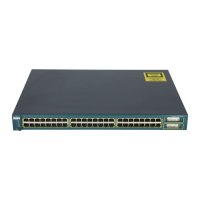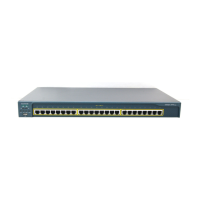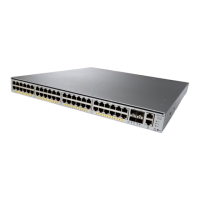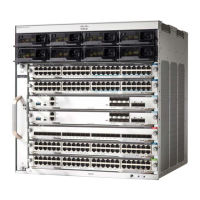11-11
Catalyst 2950 and Catalyst 2955 Switch Software Configuration Guide
78-11380-10
Chapter 11 Configuring Interface Characteristics
Configuring Ethernet Interfaces
• If both ends of the line support autonegotiation, we highly recommend the default setting of
autonegotiation.
• When connecting an interface to a 100BASE-T device that does not autonegotiate, set the speed to
a non-auto value (for example, nonegotiate) and set the duplex mode to full or half to match the
device. The speed value and duplex mode must be explicitly set.
• When connecting an interface to a Gigabit Ethernet device that does not autonegotiate, disable
autonegotiation on the switch and set the duplex and flow control parameters to be compatible with
the remote device.
• 100BASE-FX ports operate only at 100 Mbps and in full-duplex mode.
• 1000BASE-SX ports operate only at 1000 Mbps and in full-duplex mode.
• 1000BASE-T GBICs operate only at 1000Mbps and in full-duplex mode.
• You can configure the 10/100/1000 ports on the Catalyst 2950T-24 and Catalyst 2950T-48-SI
switches to autonegotiate the duplex mode by using the duplex auto interface configuration
command, or you can manually set the duplex mode to full by using the duplex full command.
The 10/100/1000 ports on the Catalyst 2950T-24 switches operate only in full-duplex mode. The
ports do not support the half keyword in the duplex command.
The 10/100/1000 ports on the Catalyst 2950T-48-SI switches support the half keyword when the
interface speed is 10 or 100 Mbps.
• 10/100/1000 ports on the Catalyst 2950 LRE or the Catalyst 2955T-12 switch can operate at 10 or
100 Mbps in either half- or full-duplex mode. The ports can operate at 1000 Mbps only in
full-duplex mode.
• Fiber-optic SFP-module ports on the Catalyst 2950 LRE switch operate only at 1000 Mbps in
full-duplex mode.
• GigaStack-to-GigaStack cascade connections operate in half-duplex mode, and GigaStack-
to-GigaStack point-to-point connections operate in full-duplex mode.
• When Spanning Tree Protocol (STP) is enabled and a port is reconfigured, the switch can take up to
30 seconds to check for loops. The port LED is amber while STP reconfigures.
• On the 10/100/1000 ports on an LRE switch, use the speed and duplex interface commands. You
cannot configure the speed and duplex settings on the fiber-optic SFP-module ports.
For example, if you enter the speed 100 and the duplex half interface configuration commands and
the fiber-optic SFP-module port is active, the switch attempts to autonegotiate the speed and duplex
settings as 1000 Mbps with full autonegotiation.
If you enter the speed 100 and the duplex half interface configuration commands and the
10/100/1000 port is active, the switch advertises the speed and duplex settings as 10 Mbps and half
duplex.
• On the LRE ports on an LRE switch, use the local speed and the local duplex interface
configuration commands.
Caution Changing the interface speed and duplex mode configuration might shut down and re-enable the
interface during the reconfiguration.
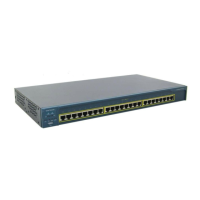
